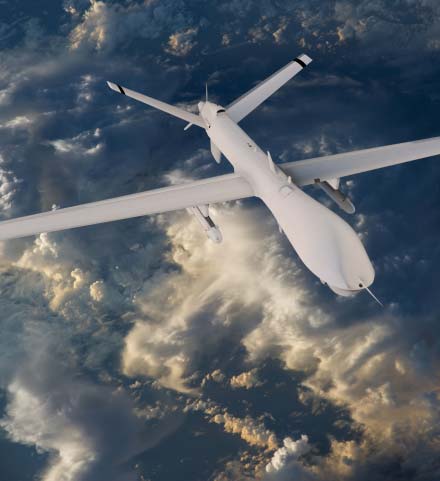All Possibilities Live In Technology
Technology solutions for today’s critical data center, analytics, cloud, collaboration, security, and network challenges.

Your mission is our mission
Connect and empower your teams wherever they are.
Forge ahead with the technology and adaptability necessary for mission success.
Protect what’s essential with focused cybersecurity.

Most businesses and organizations need technology fast but face hurdles like knowledge gaps, shrinking budgets, and legacy systems. Trace3 Gov has you covered whether you need tech assessments, project support, engineering expertise, or managed IT services. Your needs are covered by our combination of tenured engineering talent, efficient processes, contemporary technologies, and unparalleled customer service that puts you in control. From network setup and cloud services to cybersecurity and data analytics, you can trust us to bolster your tech so you can focus on your core mission.
For over two decades, we’ve honed the expertise, streamlined the processes, and fostered a culture primed to catapult your business or organization to new heights. Partner with us to craft a robust, scalable, mission-ready infrastructure that seamlessly bridges people, processes, and tools for unrivaled success.
Since 1998, Trace3 Gov has proudly partnered with the US Government, providing a comprehensive range of IT products and services across agencies worldwide. We understand the challenges of providing services and security to our Nation while navigating regulatory and budgetary complexities. Our expert team serves alongside our federal partners, providing the IT solutions integral to successful mission outcomes.

Our decades-long journey in network consulting, design, implementation, integration, and operations support has made us a Cisco Gold Partner with Master Unified Communications, Master Cloud Builder, and Master Security certifications. We ensure the scalability and security of your IT solutions and help you navigate procurement processes, guaranteeing a smooth implementation.

Trace3 Gov is at the forefront of transforming educational environments with customized IT services and solutions. We understand the unique academic challenges and opportunities from primary schools to higher education institutions. Our team is dedicated to developing IT solutions that enrich learning experiences, improve campus operations, and safeguard student data.

Aerospace operates at the intersection of mission-critical execution and cutting-edge technology. Security, integration, and mission engineering are non-negotiable. Zivaro is the bridge between technology and mission success. With deep expertise in government missions, system integration, and IT solutions, we help aerospace organizations secure, scale, and execute their most complex initiatives.

Trace3 Gov is a pivotal IT partner in the energy sector, delivering specialized services and products that meet the rigorous demands of energy providers. Our expertise in technology solutions is geared toward enhancing operational efficiencies, ensuring uninterrupted service delivery, and bolstering security in this vital industry.

For those on the frontline of industry and governance, the right IT solutions aren’t a luxury; they’re a necessity. With Trace3 Gov, you don’t just get a service—you get an arsenal tailored to empower your every move.

At Trace3 Gov, we ensure technology is more than just operational—it’s strategic. Our managed IT services, spanning from cloud and data center to SD-WAN and security, bring robust resilience to your operations…

Uncompromised efficiency and precision—that’s our promise. Trace3 Gov’s service delivery models are custom-crafted to meet your unique demands, ensuring an agile response to dynamic market…

Beyond mere IT integration, our professional services, including our Software Adoption Services, bolster your organization’s digital armory. As the world leans deeper into the digital age…

Navigating the digital labyrinth requires an adept guide. Our resident engineering services ensure you’re never alone, combining industry acumen…
Partner with us to unlock tailored IT solutions designed to streamline your operations, enhance efficiency, and fuel business growth, ensuring long-term success and innovation.
With Trace3 Gov, we could adapt to disruptive changes and harness technology for enhancing student engagement and administrative productivity.
CIO
Major University
With Trace3 Gov, we’ve managed to easily navigate complex IT challenges. Their solutions have significantly improved our operational efficiency and data management.
CIO
State Agency
Trace3 Gov helped us navigate the digital landscape with ease. Their tailored solutions significantly boosted our institutional efficiency and learning experiences.
IT Director
K-12 Institution
Trace3 Gov demonstrated outstanding technical expertise and exhibited unwavering commitment to our mission. They completely transformed our IT infrastructure, enabling us to concentrate on our core operations.
IT Director
Major Energy Company
Trace3 Gov’s committed team helped us sail through intricate IT challenges. Their solutions markedly improved our operational efficiency.
CIO
Federal Department
Trace3 Gov is not just a vendor but a trusted partner. Their technical expertise, dedication, and understanding of our needs have allowed us to elevate our services.
IT Director
Local Government
What set Trace3 Gov apart was their technical acumen and unwavering dedication to our mission. They reshaped our IT framework, freeing us to focus on our core responsibilities.
IT Director
Federal Agency
Trace3 Gov deftly guided us through complex IT challenges. Their solutions markedly boosted our operational efficiency.
CTO
Leading Mining Corporation
With Trace3 Gov, we could adapt to disruptive changes and harness technology for enhancing student engagement and administrative productivity.
CIO
Major University
With Trace3 Gov, we’ve managed to easily navigate complex IT challenges. Their solutions have significantly improved our operational efficiency and data management.
CIO
State Agency
Trace3 Gov helped us navigate the digital landscape with ease. Their tailored solutions significantly boosted our institutional efficiency and learning experiences.
IT Director
K-12 Institution
Trace3 Gov demonstrated outstanding technical expertise and exhibited unwavering commitment to our mission. They completely transformed our IT infrastructure, enabling us to concentrate on our core operations.
IT Director
Major Energy Company
Trace3 Gov’s committed team helped us sail through intricate IT challenges. Their solutions markedly improved our operational efficiency.
CIO
Federal Department
Trace3 Gov is not just a vendor but a trusted partner. Their technical expertise, dedication, and understanding of our needs have allowed us to elevate our services.
IT Director
Local Government
What set Trace3 Gov apart was their technical acumen and unwavering dedication to our mission. They reshaped our IT framework, freeing us to focus on our core responsibilities.
IT Director
Federal Agency
Trace3 Gov deftly guided us through complex IT challenges. Their solutions markedly boosted our operational efficiency.
CTO
Leading Mining Corporation
With Trace3 Gov, we could adapt to disruptive changes and harness technology for enhancing student engagement and administrative productivity.
CIO
Major University
With Trace3 Gov, we’ve managed to easily navigate complex IT challenges. Their solutions have significantly improved our operational efficiency and data management.
CIO
State Agency
Trace3 Gov helped us navigate the digital landscape with ease. Their tailored solutions significantly boosted our institutional efficiency and learning experiences.
IT Director
K-12 Institution
Company


© Trace3, LLC. All Rights Reserved. Privacy Policy | Quality Policy | Acceptable Use Policy
Master Sales Agreement | PO Terms & Conditions | Cancellation and Return Policy